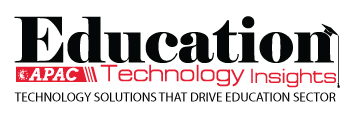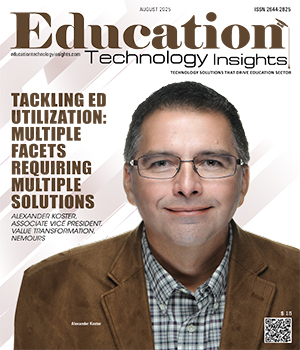THANK YOU FOR SUBSCRIBING
Be first to read the latest tech news, Industry Leader's Insights, and CIO interviews of medium and large enterprises exclusively from Education Technology Insights
Beyond Systems: Leading a People-First Digital Transformation in Higher Education
Alfredo Lozano, Director of Information Technology for Student Affairs, Carnegie Mellon University
 Alfredo Lozano, Director of Information Technology for Student Affairs, Carnegie Mellon University
Alfredo Lozano, Director of Information Technology for Student Affairs, Carnegie Mellon UniversityAlfredo Lozano, MSIT, is an IT leader with extensive experience in enterprise systems management, data analysis and process optimization. As Director of Information Technology at Carnegie Mellon University, he excels in leading cross-functional teams, driving innovation and ensuring operational excellence through strategic planning and effective technology implementation.
Through this interview, Lozano highlights the importance of leading digital transformation in higher education with a people-first mindset, where technology serves as a bridge for connection, collaboration and student empowerment rather than just a system to be managed.
In higher education, technology has become both the engine and the ecosystem of the student experience. From housing assignments to course registration, dining transactions and engagement apps, today’s universities rely on a complex constellation of systems to serve their communities. Yet despite the sophistication of these tools, the real measure of digital maturity isn’t how many systems we manage - it’s how seamlessly people can connect through them.
At Carnegie Mellon University, our IT transformation journey in Student Affairs has reinforced one fundamental truth: technology succeeds only when it empowers people. Building a truly connected campus requires more than infrastructure - it requires leadership that unites culture, communication and strategy.
Shifting from Systems to Experiences
For years, institutions invested heavily in new platforms, each promising efficiency and insight. But when viewed through the lens of the student journey, these systems often felt fragmented. Students shouldn’t need to know which platform manages their ID card, housing or event access - they just want a frictionless experience.
Our approach was to view technology as an experience architecture, not merely a collection of databases. That perspective guided us as we integrated point-of-sale systems, engagement tools and card access data into cohesive workflows. The goal was not to replace every system, but to connect them so they collectively deliver value to students and staff.
This mindset shift required aligning multiple teams under a shared vision - what I call the ecosystem view. Once teams began thinking beyond their immediate tools, collaboration and creativity followed naturally.
Leadership over Technology
Digital transformation in higher education is a leadership challenge disguised as a technical one. Tools can automate tasks, but leaders must inspire alignment, trust and accountability across departments.
Our IT organization within Student Affairs adopted clear governance models and communication frameworks to strengthen collaboration. We implemented skill mapping, daily and weekly stand-ups, and shared ownership of projects, empowering each team member to see how their work contributes to institutional goals.
This people-first leadership approach has proven far more powerful than any software upgrade. When staff understand why change is happening and feel ownership of the outcome, adoption follows naturally.
Simplifying through Strategic Focus
One of the most effective lessons I’ve learned follows the 80/20 rule: twenty percent of our systems drive eighty percent of our value. By focusing on those high-impact platforms - student engagement, identity management and analytics—we reduced redundancy and complexity.
“We implemented skill mapping, daily and weekly stand-ups and shared ownership of projects, empowering each team member to see how their work contributes to institutional goals.”
Simplification is not about cutting corners; it’s about creating clarity. Too many overlapping tools can drain resources and morale. Strategic focus allows IT teams to deliver reliability and innovation simultaneously, ensuring every system supports both mission and user experience.
Data as a Bridge, Not a Barrier
Every system generates data, but insight emerges only when information flows freely. By connecting datasets across Student Affairs, we began identifying meaningful patterns - such as when students engage with campus services or where service bottlenecks occur. These insights help departments act proactively rather than reactively, improving student support and operational efficiency.
However, data integration isn’t just a technical project; it’s an exercise in trust and collaboration. Clear data governance, transparency and respect for privacy are what enable responsible innovation. When done right, analytics becomes not surveillance, but service.
Building the Culture of a Connected Campus
The technology landscape will continue to evolve - AI, automation and digital assistants are already reshaping education, but the constant is culture. A connected campus thrives on shared purpose, not shared code.
In our division, we treat each project as an opportunity to strengthen relationships between IT, Student Affairs leadership and campus partners. Whether we are implementing an AI-powered chatbot or deploying a new point-of-sale system, we lead with empathy, communication and collaboration. Technology has become a tool for community, not complexity.
Ultimately, our success is measured not by uptime or dashboards, but by how effectively our systems enable students to learn, belong and thrive.
The Future: Purpose-Driven Digital Transformation
As higher education faces shifting expectations and financial pressures, the temptation is to chase the next big technology. But the real opportunity lies in aligning innovation with institutional purpose.
Future-ready campuses will focus less on acquiring more systems and more on designing experiences that are unified, data-informed and human-centered. Technology leaders must champion simplicity, governance and culture as strategic assets - because transformation doesn’t start with software; it starts with people.
Closing Thought
The journey from systems to ecosystems is not a sprint; it’s an ongoing dialogue between technology and humanity. When IT leaders view their role not just as system integrators but as architects of connection, the impact extends far beyond screens and servers.
In the end, the most advanced school management system is one that makes people feel seen, supported and seamlessly connected to their institution’s mission.
Read Also
Preparing Students for More than their First Job
Purpose, People and Progress: A CIO's Vision for Higher Education
Why Teachers Must be Curriculum Creators
You Can't Learn to Swim at the Library
Leadership as the Mechanism for Advancing Data Governance in Higher Education
Rewiring Stem Education for the Future

I agree We use cookies on this website to enhance your user experience. By clicking any link on this page you are giving your consent for us to set cookies. More info

However, if you would like to share the information in this article, you may use the link below:
www.educationtechnologyinsightsapac.com/cxoinsights/alfredo-lozano-nid-3516.html






















